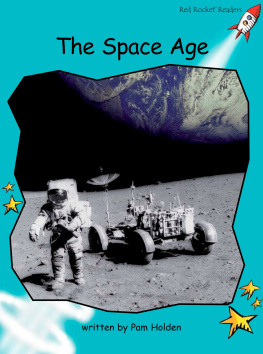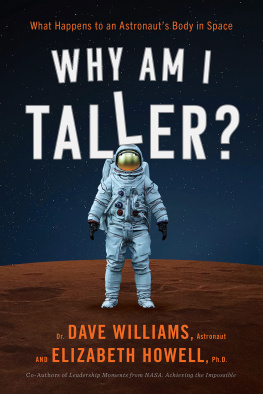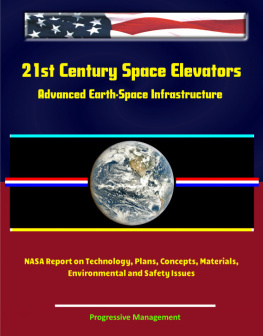PREFACE
I first read The HighFrontier many years ago, long before I ever imagined that I would someday orbitthe Earth myself. The book's central premise - that much of the general knowledgeand technology needed to design a human habitat in space were already in hand -made quite an impression upon me in 1976.
I recall, too, that thebook provoked quite a flood of questions for me: Could such a future really beso close at hand? Would life in these colonies really be different than life inhuman societies on Earth? Why wasn't progress in this direction more evident,if so many pieces of the puzzle lay so near at hand? Gerry addresses theseissues, noting that politics, finance and national will usually set the pacefor our space plans to a greater degree than do technical issues. At the sametime, however, he staunchly refuses to give in to the cynicism or pessimism towhich they all too often give rise. This allows him to focus instead on thesolvable, technical challenges involved and, thus, to give us a vision of anexciting future towards which we can work. I think he does a great service bypresenting this vision in great detail and disseminating it broadly, provokingquestions such as mine in the minds of present and future engineers, governmentleaders, financiers and space citizens. It is essential to maintain a positivevision of the future, from which to draw our goals, the motivation to pursuethem, and the compulsion to meet the complex human challenges we will facealong the way.
As you read this book, Ihope you will come to share some of this vision and will consider some of theproblems that confront us now, as we strive to become a spacefaring people inthe next century. I trust you will enjoy, as I did, the richly-detaileddescriptions Gerry gives of what some future homes in space might be like. Ofcourse, whether or not he has gotten the layout of the homes and gardens, orsolar panels and mirrors, exactly right is not thevital point. The key questions are: What will the motives and incentivesactually be that someday drive significant human migration into space? What keytechnologies, or financial and political arrangements, could be developed todayto enable this? And a question I hope many readers, especially young ones, willask themselves: What role can I play in mankind 's progress towards the HighFrontier?
I, for one, believe thatincreasing both human activity in space and automated exploration of our solarsystem will teach us many lessons, and will compel us to develop manytechnologies, that will be important, in some cases perhaps crucial, to thewell-being of human societies on Earth, as well as to our possible descendantsin space. Can there be any better motivation for persevering through thechallenges ahead of us on the space frontier? Well, perhaps just one: the viewof Earth out the window of my future living room...
Kathy Sullivan Astronaut
1989
INTRODUCTION
Following the publicationof The High Frontier, the existing thrust of our human species outward to thenew world of space continued through the work of many nations. Western Europe,Japan, India and the People's Republic of China all developed independentcapabilities for launching satellites and spaceprobes. Western Europe andChina in particular also began working toward manned spaceflight, and Japan isnow planning to launch spacefarers on its "Hope" space plane, areusable glider.
The space activities ofthe U.S.S.R. and the United States moved along diverging lines, reviewed inthe new chapter which completes this book. The High Frontier concept, usingthe material and energy resources of space to improve the human condition onEarth and to build colonies in space, was developed and supported by the workof many people. The basic arguments and conclusions of the High Frontierconcept were buttressed by almost a dozen studies and reviews, done mainly byNASA and its contractors. In 1977 a new, independent, citizen-supportedorganization, the Space Studies Institute (SSI) was formed. The Instituteassumed the task of funding the basic research necessary to our attainment ofthe High Frontier. Its research included successful projects on massaccelerators and the processing of lunar materials. Institute research intoeconomical ways of manufacturing large products in high orbit, such as solarpower satellites, showed that manufacturing in space from lunar materials canbe highly beneficial to life on Earth, and profitable as well.
Space colonies, our maintopic, are now seen as an inevitable result of the large-scale development ofspace resources. They are essential, because they turn space into much more thana location for transient occupancy. In the modern view space will become arich, new, Earthlike environmental range for humanity, bathed in continuousfree energy.
Detailed engineeringstudies verified that the "Island One" spherical geometry for spacecolonies ranked highest in simplicity, ruggedness, economy and safety amongEarthlike colony designs. The L5 orbit for colonies was shown to have nostrong advantage over other high circular orbits. "L5," as used here, should therefore be taken as shorthand forany high circular orbit about the Earth or the Sun.
When the Space StudiesInstitute decided to publish a new edition of the High Frontier, naturally Iwas tempted to edit the main text, in order to reflect progress since the bookwas written. As a matter of principle I resisted that temptation. While thisintroduction is new, a few introductory and closing lines of Chapter 1 areedited, and Appendix 2 has been replaced by the new "Perspective: a Viewfrom 1988," all of the book from Chapter 2 through Appendix 1 remains exactlyas it was written originally. My reasoning is that this work both recommendsour future course and predicts what the result will look like. To judge itsvalidity, you as its reader should be free therefore to review the original asthe years go on. My own re-reading of the book, subjective to be sure, reassuresme that its logic will endure, and that future history will develop in broadoutline as it predicts. I leave to readers still farther away in time what Ihope will be the pleasure of comparing future reality to my perception of itseen from the world of 1976.
In the last eventfulyears one of my great joys has been meeting and coming to know well a number ofhighly talented individuals, who work together toward our reaching the HighFrontier. I cannot name several without omitting still others who deservethanks. But leading all who work toward the High Frontier, I thank especiallyGregg Maryniak, the Senior Associates, staff, members and volunteers of theSpace Studies Institute, and all who work with them, for their creativity,their dedication, and their continuing hard work.
Gerard K. O'Neill
Princeton, New Jersey 1988
THEHIGH FRONTIER
1:A LETTER FROM SPACE









